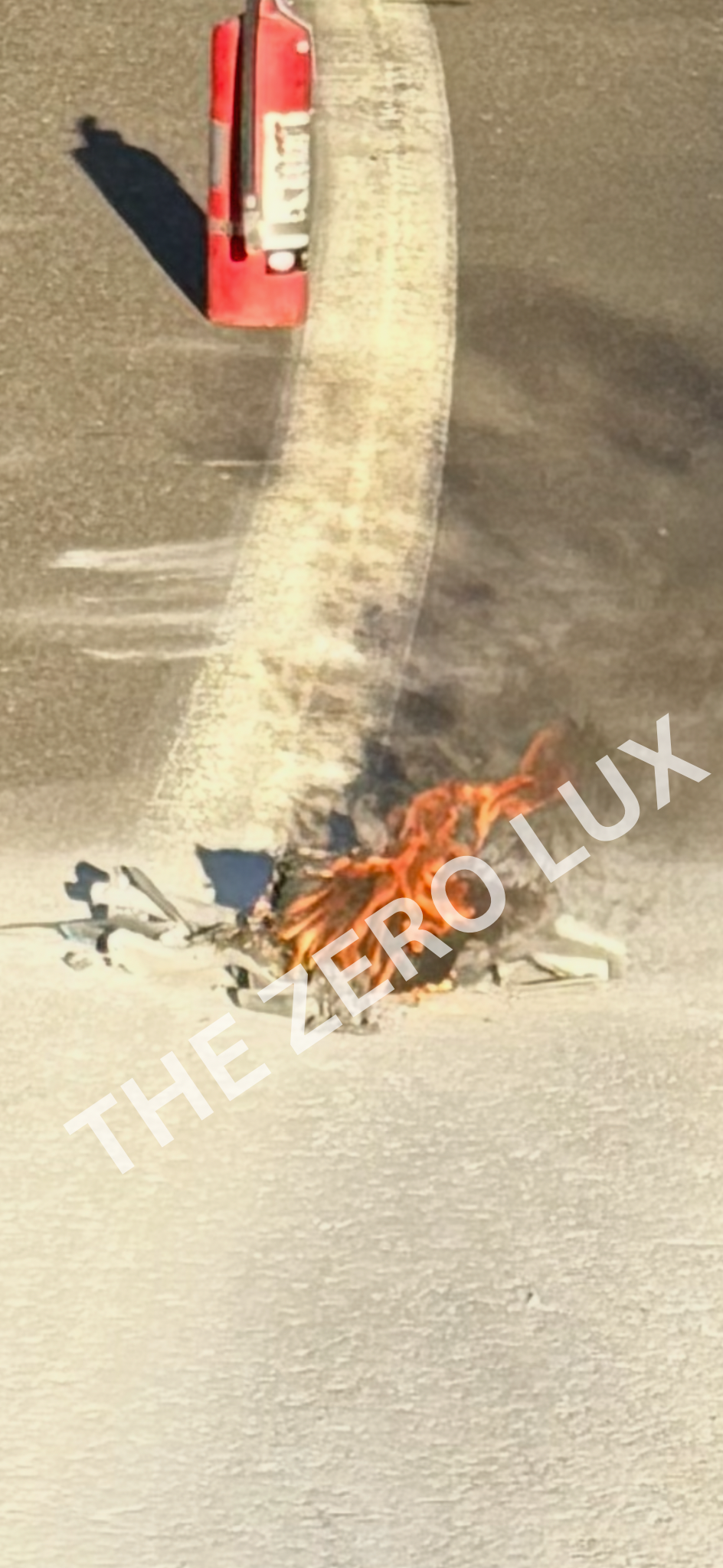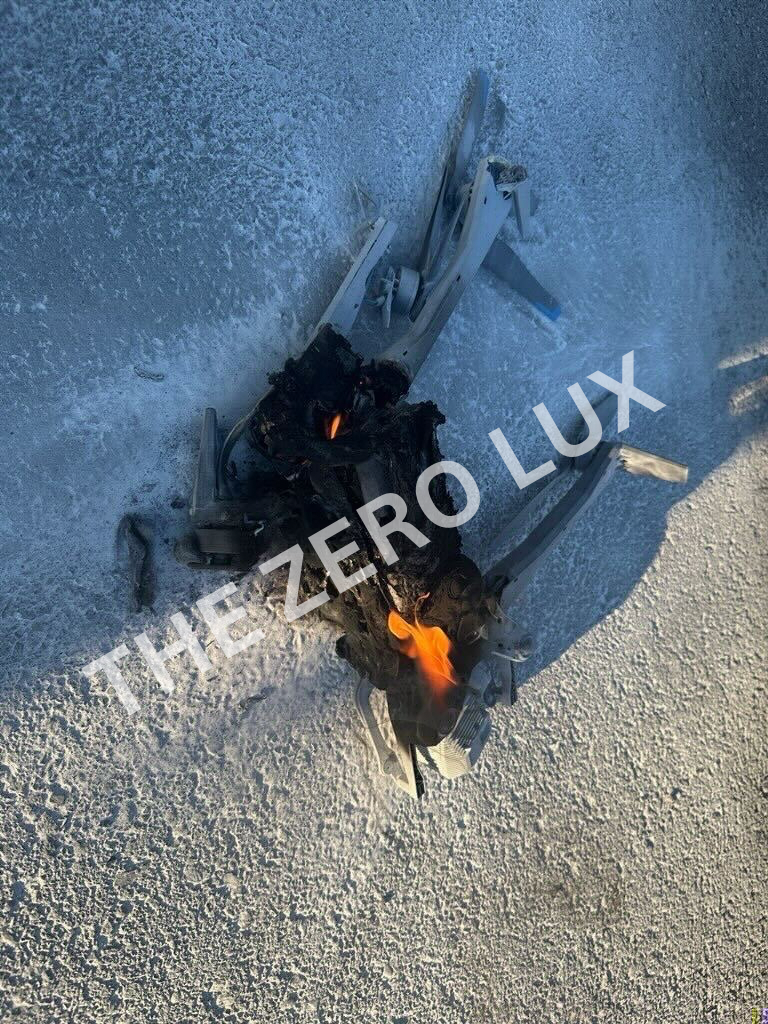


Images show the Skydio X10 drone igniting and the burned airframe left on the pavement during an August public safety demonstration in Snohomish County, Washington. Photos obtained by The Zero Lux.
This article has been updated to include newly obtained documentation from South County Fire regarding the August Skydio X10 incident.
The Zero Lux has confirmed that a Skydio X10 drone operating during a regional Drone First Responder trial in Snohomish County crashed and caught fire in August. Photos obtained by The Zero Lux show the airframe engulfed in flames and the burned remains on the pavement after extinguishment. Multiple public-safety sources initially raised concerns about the incident, and those accounts can now be compared with the agency’s newly released documentation.
An executive summary published by South County Fire describes the crash as taking place on August 12 during a week-long RTIC and DFR pilot program involving Skydio, Flock, Axon, and nearly every local law enforcement agency. According to the document, the X10 “impacted a tree branch” before losing control, crashing in the street, and catching fire.
The summary states that “full telemetry data [was] not available” and characterizes the cause as preliminary, citing sun glare, dense tree cover, high-speed flight, and a possible battery puncture on impact. The agency notes that Skydio recommended parachute-deployment systems to reduce the severity of ground impacts and improve safety in future operations.
This official account aligns with certain details visible in the photographs but leaves unanswered questions that several operators raised privately. One veteran public-safety drone operator told The Zero Lux that newer X10 battery units sourced outside China have shown more instability in the field, describing them as “seeming to explode a lot.” That claim has not been independently verified, and the executive summary attributes ignition solely to crash forces rather than a spontaneous battery failure. Still, the lack of recovered telemetry and the precise sequence of events remain unclear, making it difficult to confirm the extent to which environmental conditions, system behavior, or battery resilience contributed to the fire.
The report also notes that Skydio drones flew the overwhelming majority of missions during the pilot week. Out of 230 total flights, 182 were conducted by Skydio. Flock’s system withdrew after the second day due to infrastructure and connectivity limitations, leaving Skydio responsible for nearly all DFR deployments. That concentrated operational load increases the likelihood of documenting both best case performance and failure points, though the agency does not explicitly address whether the X10’s autonomous avoidance system responded as intended before the tree strike.
No public NTSB docket currently lists a Skydio-related incident in Snohomish County for the relevant period. This absence does not confirm whether a report was filed. Drone-related cases often take months to appear in the public database, and recent federal disruptions have slowed the release of aviation records. South County Fire’s summary also makes no reference to federal reporting, leaving the status of any notification unknown. The release of the executive summary provides the first official explanation of the August X10 fire, but it leaves open a set of questions that operators and agencies will need to confront as DFR programs expand. High-speed autonomous flight near trees, the reliability of newer battery assemblies, the availability of telemetry during crash investigations, and the procedures around federal reporting are all central to evaluating the safety of these systems in real-world conditions.
If you have direct knowledge of this incident or others like it, you may contact The Zero Lux securely contact@thezerolux.com or seanmcampbell@proton.me





